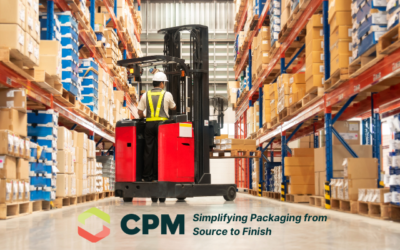
Choosing the right 3PL provider is one of the most critical decisions for your business. The wrong choice leads to delayed shipments and frustrated customers. The right choice becomes a strategic partnership that accelerates growth and enhances customer experience.
Here are the seven key factors that separate world-class 3PL providers from the rest.

1. Comprehensive Service Portfolio Under One Roof
Why This Matters: Multiple vendors create communication gaps and accountability issues. When problems occur, you play detective to find the responsible party.
What to Look For
- Integrated packaging, warehousing, and fulfillment services
- Value-added services like kitting, assembly, and quality control
- Technology integration connecting all services
- Unified reporting and visibility
Questions to Ask
- “What services do you provide in-house versus outsourcing?”
- “How do your teams communicate and coordinate?”
- “Can you show me unified reporting across all services?”
2. Deep Industry Expertise
Why This Matters: Every industry has unique requirements and regulations. Industry knowledge prevents costly mistakes and ensures compliance.
Industry-Specific Capabilities to Look For:
- Consumer Retail & E-commerce: Retail-ready packaging, multi-channel fulfillment, seasonal scaling, platform integration
- Personal Care: Temperature-controlled storage, custom kitting, premium packaging, cosmetic regulations
- Food & Beverage: Food-grade facilities, temperature monitoring, lot tracking, food safety compliance
- Medical Devices & Life Sciences: Sterile packaging, FDA compliance, medical device experience, quality standards
- Manufacturing & Industrial: Component kitting, just-in-time delivery, industrial packaging, safety protocols
- Aerospace: Precision packaging, anti-corrosive solutions, quality certifications, specialized protection
Questions to Ask:
- “What percentage of clients are in my industry?”
- “What industry-specific certifications do you maintain?”
- “Can you provide similar company references?”
3. Advanced Technology and Integration
Why This Matters: Modern operations depend on technology for inventory management, order processing, and customer communication.
Essential Features
- Real-time inventory tracking with automated alerts
- Warehouse Management System with barcode scanning
- Multi-channel order management
- Customer portal with performance dashboards
Integration Capabilities:
- E-commerce platforms (Shopify, Amazon, WooCommerce)
- EDI Interfaces
- ERP and accounting system connections
- API connections for real-time data exchange
- Automated reporting and analytics
Questions to Ask:
- “What warehouse management system do you use?”
- “How do you integrate with our existing systems?”
- “What real-time visibility will we have?”
4. Strategic Geographic Coverage
Why This Matters: Location impacts shipping costs, delivery times, and customer satisfaction.
What to Consider:
- Regional expertise: Local market knowledge and carrier relationships
- Proximity to HQ: Proximity to home office during commercialization period
- Distribution strategy: Strategic locations optimizing shipping costs and transit times
- Scalability: Network supporting geographic expansion
Questions to Ask:
- “Where are your facilities, and how do they serve our markets?”
- “How do you support geographic expansion?”
5. Proven Scalability and Flexibility
Why This Matters: Your business will grow and change. Your 3PL must adapt without compromising service quality.
Scalability Indicators:
- Infrastructure capacity for growth
- Financial stability and investment capability
- Operational flexibility for volume fluctuations
- Technology that scales with transaction volume
Questions to Ask:
- “How do you handle seasonal volume fluctuations?”
- “What’s your largest client, and how did you scale with them?”
- “What happens if our volume doubles in 12 months?”
6. Quality Standards and Certifications
Why This Matters Quality ensures consistency, compliance, and customer satisfaction.
Key Certifications:
- ISO for quality management is a plus
- FDA registration for food and medical products
- SQF/BRC for food safety if applicable
- SOC 2 for data security if required
Performance Standards:
- 99.5%+ order accuracy
- Cutoff for daily order processing
- Damage rates below 0.5%
- Inventory accuracy above 99.5%
- Production turnaround
Questions to Ask:
- “What certifications do you maintain?”
- “What are your accuracy rates and performance metrics?”
- “How do you handle quality issues?”
7. Cultural Fit and Partnership Approach
Why This Matters You’re entering a partnership that significantly impacts operations and customer experience.
Partnership Indicators
- Collaborative problem-solving approach
- Proactive communication about issues and opportunities
- Investment in your success through dedicated resources
- Transparency in pricing and performance
- Long-term thinking over short-term profits
Questions to Ask
- “How do you approach client relationships?”
- “Who would be our primary contact?”
- “How often do you conduct business reviews?”
Red Flags to Avoid When Choosing a 3PL
Operational Red Flags
- High staff turnover or outdated technology
- Poor facility conditions or inadequate security
- Lack of industry experience or certifications
- No existing customers in your industry
- Reluctance to share performance data
Financial Red Flags
- Unusually low pricing that seems too good to be true
- Hidden fees or unclear pricing structures
- Financial instability or recent ownership changes
- High client turnover
Cultural Red Flags
- Pushy sales tactics or pressure to sign quickly
- Poor communication during evaluation
- Inflexibility in contract terms
- Focus on price over value and partnership
Making Your Decision on Which 3PL to Choose
- Create a detailed RFP with your requirements and evaluation criteria
- Conduct facility tours to see operations firsthand
- Check references thoroughly, especially in your industry
- Consider a pilot program before full commitment
- Negotiate win-win terms focusing on partnership value
The Bottom Line
Choose a 3PL provider who becomes a strategic partner, not just a vendor. Focus on total value, not just cost. The right partner accelerates growth and enhances your competitive position.
The cheapest option is rarely the best value. Consider the cost of poor service, lost customers, and operational disruptions. Take time to evaluate thoroughly and choose a partner for long-term success.

